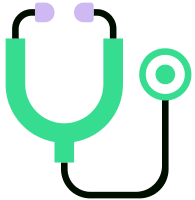What are cannabinoids?
Cannabinoids are naturally occurring compounds found in the Cannabis sativa plant. Cannabinoids imitate compounds human bodies naturally produce already, called endocannabinoids. These are produced by the human body and used to promote homeostasis, which regulates internal health and immune system functions. The endocannabinoids are involved in many functions in our body, including appetite, feeling pain and mood. Because this system passes chemicals – acting like messages – between the brain and different part of the body, they are critical for our health, both mental and physical.They’re the reason you may feel a psychoactive high or therapeutic pain relief after consuming cannabis.
With over 480 different compounds present in the plant, only around 66-113 are termed cannabinoids, but estimates still vary wildly. Since there are so many, learning the interactions between cannabinoids is very useful. The fascinating part is that different cannabinoids produce different effects according to the type and location of receptor they interact with.
Although your body contains several other receptors capable of interacting with cannabinoids there are two that are most widely known: CB-1 receptors which are most commonly found in brain cells and the central nervous system, and CB-2 receptors which are usually found in the body and the immune system.
For example, the cannabinoid Tetrahydrocannabinol (THC) binds with the CB-1 receptors in the which are found in abundance in the brain which gives you the psychoactive high you associate with THC.
Classes of Cannabinoids
The cannabinoids are separated into these subclasses:
- Cannabigerols (CBG)
- Cannabichromenes (CBC)
- Cannabidiol (CBD)
- Tetrahydrocannabinol (THC)
- Cannabinol (CBN)
- Cannabinodiol (CBDL)
- Other cannabinoids including cannabicyclol (CBL), cannabielsoin (CBE) and cannabitriol (CBT)
What do I even do with this information?
Different cannabinoids have different effects. Certain ones provide anxiety relief while others can induce hunger (the munchies) for cancer patients or people struggling with lack of appetite. Knowing which cannabinoid has your desired effects can help you choose medicine that best fits your needs.
Tetrahydrocannabinolic Acid (THC-A) is a non-psychoactive cannabinoid. THC-A is the most abundant cannabinoid in raw cannabis. When THC-A is heated to a high enough temperature, it immediately converts to THC. This process, called decarboxylation, also occurs naturally as fresh cannabis dries and cures.
THC-A has illustrated significant anti-inflammatory, antiemetic and neuroprotective properties, and a study was done in 2018 that suggested possible therapeutic value as an anti-tumor agent.
Tetrahydrocannabivarin (THC-V) is a potentially potent psychoactive cannabinoid. Research studies are examining its effects on certain psychological conditions such as PTSD. It may have anxiolytic properties and has also shown promise as a potentially effective treatment for certain types of psychosis. Limited rodent studies have indicated that THC-V can decrease appetite.
Delta-9-tetrahydrocannabinol (THC) is the most well-known cannabinoid and the main psychoactive compound in cannabis. THC has significant antiemetic effects. Many cancer patients use it to reduce nausea and vomiting associated with chemotherapy treatments. It can also be used to stimulate appetite, making it a useful medical agent for wasting syndrome and anorexia.
THC may be especially beneficial for pain management. The analgesic properties may be useful for treating chronic pain stemming from multiple conditions. Patients struggling with sleep-related issues may also benefit from THC. Studies have found that the compound can reduce rapid eye movement during sleep which could help limit PTSD-related nightmares, providing more restful sleep. Many patients also claim that it helps them fall asleep easily. Other common uses may include protecting the nervous system, reducing muscle spasms and providing a sense of relaxation and stress relief.
Cannabidiol (CBD) is another versatile cannabinoid with multiple therapeutic effects. The non-intoxicating properties make it more applicable to those who need and want to stay clear-minded. One of the most appealing aspects is how CBD can actually mitigate the unwanted side effects of THC, like intoxication and increased heartbeat. CBD has powerful anti-inflammatory properties. The compound may also be useful for treating certain mental health conditions. Evidence shows that CBD can be an anxiolytic and antipsychotic agent. Some of CBD’s most studied attributes are its antiseizure properties.
Cannabigerol (CBG) is a non-intoxicating cannabinoid that is found in minimal amounts (less than 1%) in medical marijuana. CBG is the chemical precursor to THC and CBD. CBG has indicated potential in chronic pain management. One study found that CBG may have potential as an anti-cancer agent. Along with THC-A, the compound was able to inhibit the growth of colorectal cancer cells in mice which slowed the colon cancer growth. It was also able to block receptors that cause cancer cell growth. This is very preliminary research that warrants further research, but medical studies are still a long way from proving CBG’s efficacy as an anticancer agent in humans.
Cannabidivarin (CBD-V) is a non-intoxicating cannabinoid that has exhibited anticonvulsant effects in certain rodent studies. It is being researched for its potential in treating epilepsy.



